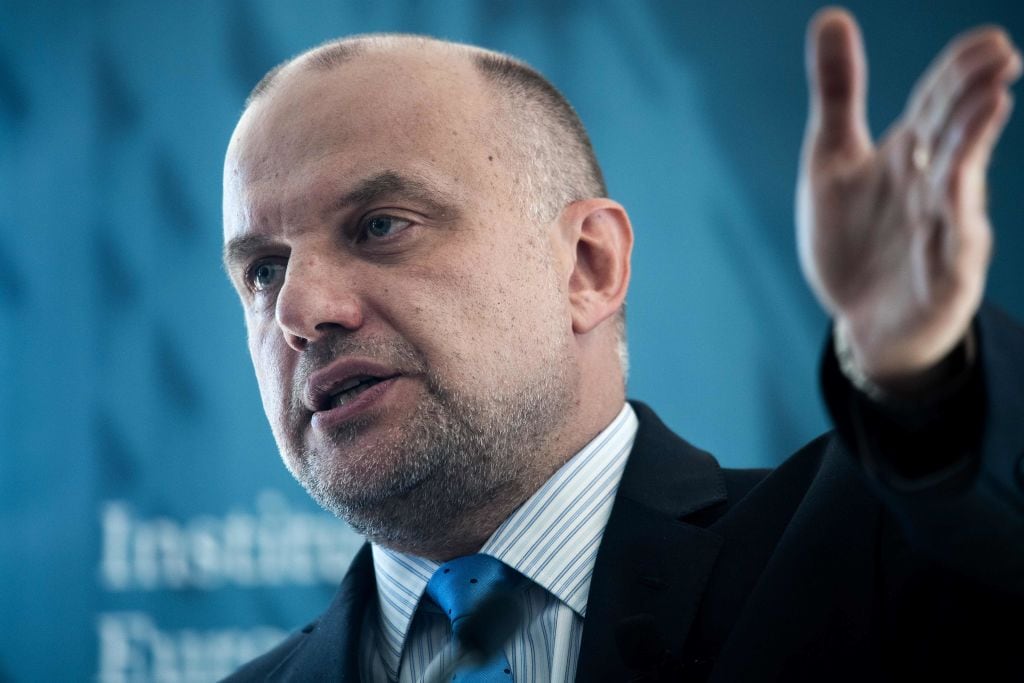One might conclude that the 2018 NATO summit in Brussels had an image problem: No dominant narrative emerged that could easily translate into catchy headlines. However, the summit was a highly significant one. It laid the path for what we are doing now and what we need to keep focusing on in 2019.
European security is the cornerstone of NATO’s defense and security equation, and Europe’s role in shouldering this effort must increase. It is what the United States expects, what NATO needs and what our adversaries fear. A strong and united NATO is the best deterrent.
In Brussels, we took a serious look at our capability to mobilize, form, equip and move units rapidly across NATO. I would like to highlight two decisions in particular.
First, the NATO Readiness Initiative — or in American parlance, the 4x30 initiative — was an important step: It would require the alliance to have 30 land battalions, 30 air fighter squadrons and 30 ships ready to deploy within 30 days of being put on alert.
This signifies a huge cultural shift within NATO: After a generation of counterinsurgency operations that require a very different approach and philosophy, the alliance is going back to basics, to collective defense.
We used to have this skill, but it is currently atrophied. It is a little bit like learning how to walk again.
Second, a related concept is that of reinforcement — identifying the hindrances and obstacles to moving troops and equipment across Europe, and eliminating them.
RELATED

Currently moving the U.S. equipment from Germany to Poland requires a five-day waiting period, whereas civilians might not even realize they crossed the German-Polish border.
In the same vein, we cannot afford to suddenly realize in a time of crisis that a runway is too short, a bridge too narrow or a tunnel too low.
Readiness and reinforcement remain priorities for Estonia, and I fully expect to see the alliance take strides forward on dealing with both in 2019. It will go a long way in showing that what the allies agree on at the table will be backed by actions.
NATO is an alliance built upon the solidarity of its allies. That solidarity extends from political support and burden-sharing to military contributions.
The core responsibility of the alliance is to protect and defend our territory and populations against any attack, as set out in Article 5 of the Washington Treaty.
Importantly, NATO’s efforts in all the strategic directions (north, east and south) complement one another and therefore increase the security of all allies.
Meanwhile, we also continue to face a resurgent Russia, whose attitude and activities against NATO are increasingly hostile. NATO has adequately responded to this threat by continuing to enhance its collective deterrence and defense posture.
As mentioned above, at the end of the Cold War, NATO’s primary focus shifted from deterrence and defense against a large-scale conventional war to out-of-area operations. Only in recent years, and especially after the events unfolded in Ukraine, have we witnessed a balanced refocusing back to strategic and operational aspects of conventional deterrence and defense in Europe.
We should not downplay the seriousness of Russia’s aggressive behavior. What happened on the Sea of Azov, where Russia carried out an armed attack against Ukrainian vessels, is not an incident; it is part of a pattern and thus needs to be dealt with by an adequate response from the West. Meek reactions from the West might invite further aggression.
RELATED

It is therefore imperative to continue with restrictive measures (sanctions) and be firm and determined in our messages to Russia: We do not accept the gross violation of international law and undermining the European security order.
We fully support the continuation and prolongation of sanctions until Russia renounces its destabilizing activities and until Ukraine's territorial integrity and sovereignty is restored.
Finally, it must be stressed that the credibility of the alliance must be backed with an increase in real defense spending. This remains particularly true in Europe.
In 2019, NATO, and in particular NATO’s European allies, have to be able show it is both willing and able to act in a militarily significant manner on short notice, to show that our actions match our words and to put our money where our mouth is. This will be the best 70th birthday gift NATO can receive.
Jüri Luik is the defense minister of Estonia.







